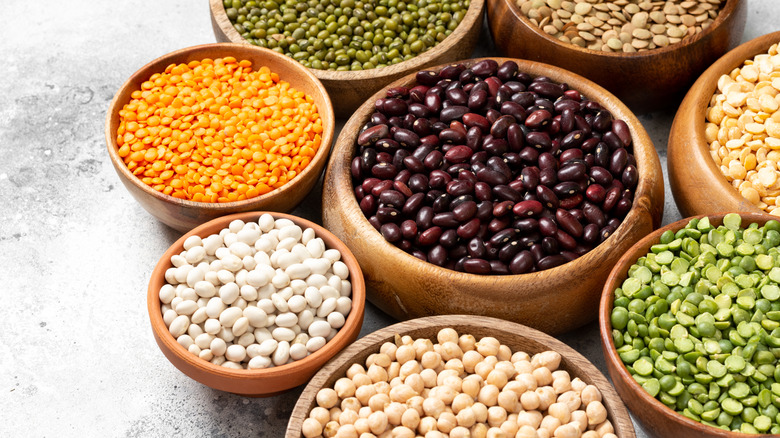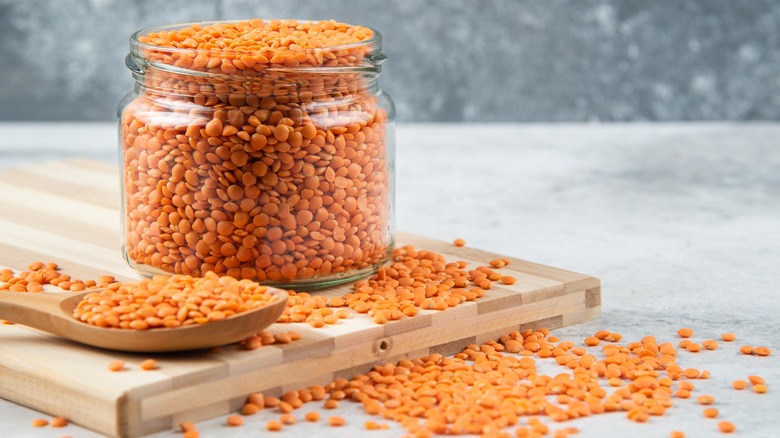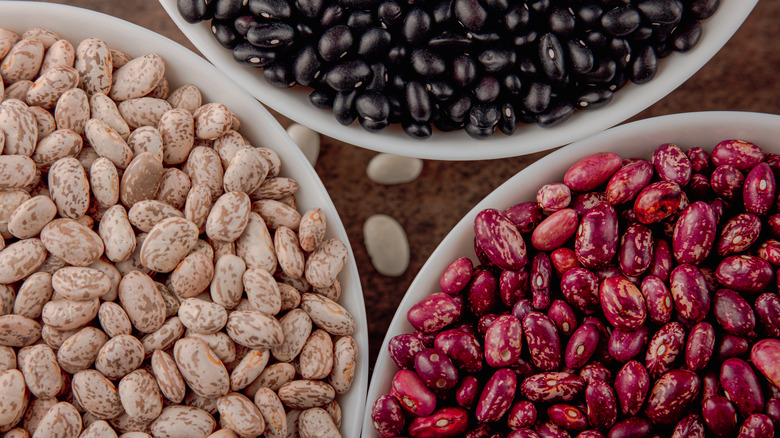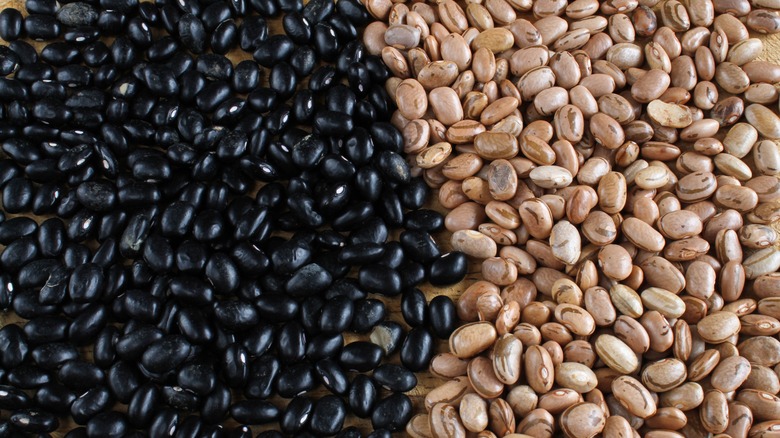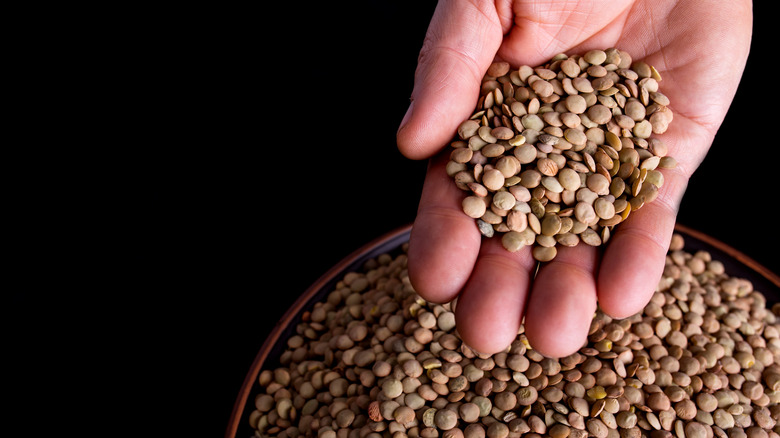Is There A Real Difference Between Lentils And Beans?
At first glance, lentils and beans may not be as enticing as, say, pasta and potatoes. But these healthier, vegetarian foods are certainly not to be overlooked.
Both beans and lentils fall under the pulse category, according to the Harvard School of Public Health. Pulses are the seeds from legume plants — the part of the plant that is most commonly consumed — and are rich in protein, fiber, and vitamins (via North Dakota State University).
In addition to their shared heritage, lentils and beans have similarly lengthy shelf lives. Dried lentils are best within about a year, says The Spruce Eats. Meanwhile, Good Housekeeping reports that beans can last for at least a year, if kept in a cool, dry place. Food Network takes this timeline a step further. It states that beans maintain their quality for roughly two to five years.
Even with these general time spans, however, both beans and lentils can last indefinitely, according to The New York Times. Lentils and beans remain edible even after their supposed expiration dates, though they may wane in quality and nutrient levels as time passes.
So, set a pot on the stove and start digging through your pantry. You'll have until your water boils to decide which pulse you want to cook.
Lentils make for varied, versatile, and vegetarian dishes
There's nothing better than warming up with a hearty bowl of lentil soup, but lentils are so much more than a singular dish. In fact, lentils are common across cultures and cuisines, thanks to their nutrients and plant-based origin.
India, for example, favors the food; the country consumes over half of the world's lentils, according to NPR. As a vegetarian option, lentils pack the perfect punch of protein and make for menu mainstays. In particular, Bon Appétit points to dal — dried lentils, beans, or peas — as a versatile Indian classic.
Equally infatuated with lentils is Canada. As of 2017, Canada has taken the title of the world's leading lentil exporter and producer, making lentils a worldwide affair, as Statista notes. Move over, maple syrup.
While lentils are clearly popular across the world, such interest is not recent. According to NPR, dried lentils have been a dietary staple since 8000 B.C. No matter when or where you eat them, however, make sure to avoid a few common cooking mistakes. In particular, be wary of mixing and matching your lentils. Older lentils are drier than recently bought ones, and combining the two will create a hodgepodge that requires different cooking times.
Beans come in all shapes, sizes, and styles
Like lentils, which come in an assortment of colors and varieties, beans have a slew of styles. There are red beans, which complement rice in Louisiana-style dishes, and garbanzo beans, which are a hummus essential. Meanwhile, black beans make for flavorful vegetarian burgers, Cuban-inspired dishes, and spicy winter soups. Not to mention, black beans also work in brownie recipes, though this is one substitute you'll have to taste to understand.
And, these are just the tip of the pulse's potential. If you're in the mood for comfort food, canned baked beans accompany barbecue classics, while pinto beans create the perfect base for your next burrito. And, cannellini, kidney, and lima beans open up many more possibilities.
With so many varieties, it's no wonder beans are so common. Each iteration of bean also has its own health benefits, so you'll have to choose carefully before cooking.
To soak or not to soak?
Preparing your pulses is when cooking gets complicated — but not as complicated as it may seem. The common narrative surrounding beans is that they require soaking to speed up cooking, whereas lentils typically do not. Masterclass states that lentils, due to their small size, require less cooking time than typically larger beans.
Yet, preparing your beans doesn't have to be such an ordeal. Contrary to common opinion, soaking may not actually be necessary. Chef Joe Yonan, author of the cookbook "Cool Beans," told Food & Wine that soaking reduces bean flavor and only nominally minimizes cooking time. So if you're short on time, skip the soaking — so long as you have a new package of beans. If you bought your beans ages ago or can't remember when they first graced your pantry, here's a rule of thumb you won't forget: It's better to soak than be sorry.
When it comes to health, lentils have the edge
Beyond preparation and physical appearance, lentils and beans differ in health benefits. When it comes to nutrients, both pulses surely surpass the aforementioned pasta and potatoes — but lentils have a slight edge over beans.
The reason for this nutritional difference comes down to chemistry. In particular, phytates are to blame. According to Medical News Today, phytates inhibit the body from absorbing micronutrients and are the predominant nutritional difference between beans and lentils. Beans have more phytates than lentils, which, according to the Harvard School of Public Health, reduce iron, zinc, magnesium, and calcium absorption.
Some sources, like Livestrong, say soaking your beans will help reduce these phytates. Yet, the L.A. Times continues to urge against soaking. Even with phytates, however, beans remain rich in iron, as do lentils. Likewise, as alternatives to rice or potatoes, pulses are known to decrease blood sugar (per Science Daily.) So, whether you opt for lentils or beans, you're probably better off.
